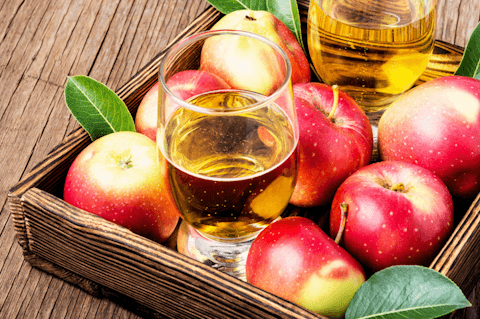Calculating Chaptalization Sugar
updated 06/25/2024
This post is inspired by yet another question on WineMakingTalk, asking about how much sugar to buy to chaptalize 50 gallons of cider. Sugar is currently on sale and the questioner knows he needs a lot, but didn’t know how to calculate the amount.
My reply provided a ballpark figure for how much to buy, and the method I used works for any must.
Although I wrote a post Chaptalizing Wine a couple of years ago, that post states the amount (volume) to add, and in hindsight it’s geared towards small batches. While the amount of sugar can be extrapolated, this post provides a more efficient way to calculate large amounts of sugar for larger batches.
The Problem

The poster intends to buy 50 gallons of cider, which he will chaptalize enough to achieve 18% Alcohol By Volume (ABV) using EC-1118 yeast.
My Solution
I did a quick-n-dirty solve for to get a ballpark answer:
A brief web search indicates that cider is typically around Specific Gravity (SG) 1.050, so that is my starting point. Note that every batch is different, so I simply chose a value in the middle of the range of SG I found for cider. This is NOT exact, but cider is a natural product that varies a lot, so I used the information I found to make an educated guess.
I used an ABV calculator with an Final Specific Gravity (FG) of 0.995 to determine that an Original Specific Gravity (OG) will produce an ABV of 17.7%.
Note: There’s no way to know the FG before the fermentation is complete, so I used a very common value. Another educated guess.
1 US pound of sugar dissolved in 1 US gallon of water produces SG 1.045, e.g., it increases the SG by 0.045 as pure water has an SG of 1.000.
Starting with SG 1.050 and bumping it to SG 1.125 means we need to increase the SG by 0.075.
0.075 / 0.045 = 1.7, meaning we need 1.7 pounds of sugar to raise the SG of 1 gallon of cider at 1.050 to 1.125.
For 50 gallons of cider: 1.7 * 50 = 85 pounds of sugar.
This situation required a few assumptions, so it’s a ballpark answer.
General Solution
Normally when chaptalizing a must, I know the SG of the must and I know the SG I want, so the results are more exact.
Differential Value = Desired SG – Must SG
Pounds per Gallon = Differential Value / 0.045
Multiply the Pounds per Gallon by the number of gallons to determine how much sugar to add.
Another Example
Last fall I purchased Vidal Blanc grapes, which came in at SG 1.080. If the FG is 0.995, the ABV will be 11.5%. I expected to backsweeten to address high acid (common in colder weather French-American hybrids), so I wanted the ABV a bit higher, as backsweetening will dilute the wine.
My target SG was 1.090 (12.9% ABV), so:
Differential Value = 1.090 – 1.080 = 0.010
Pounds per Gallon = 0.010 / 0.045 = 0.22 pounds/gallon
For 4 gallons of juice, I needed to add 0.88 pounds of sugar, which is 1.98 cups of sugar. I added 2 cups of sugar, which raised the SG to 1.088 (12.6% ABV). This is close enough so I went with this.
Note: 1 pound sugar = 2.25 cups sugar.
Why didn’t I get SG 1.090?
Potentially a lot of reasons. One is the quality of my measurement tools (hydrometer, measuring cup, etc.) and my accuracy in using them.
Another reason is how homogeneous the must is — or isn’t. Even with good stirring and mixing, it’s common for a must to not be homogeneous, e.g., readings taking from different spots in the must produce different SG values. We do our best to stir well, but it may not make the must fully homogeneous.
I was not concerned that I did note quite hit the target. An important point in winemaking is: Don’t chase a number that is honestly arbitrary.
If you’re close to what you expected / calculated, go with it.

How do you dissolve 85 pounds of sugar(I know it a lot of must)? Stirring 50 gallons is quite the problem. Hope they have an oar or something. That will get you in shape!
Maybe a small outboard motor?
I’d add the sugar a pound at a time, stirring well during and after each addition.